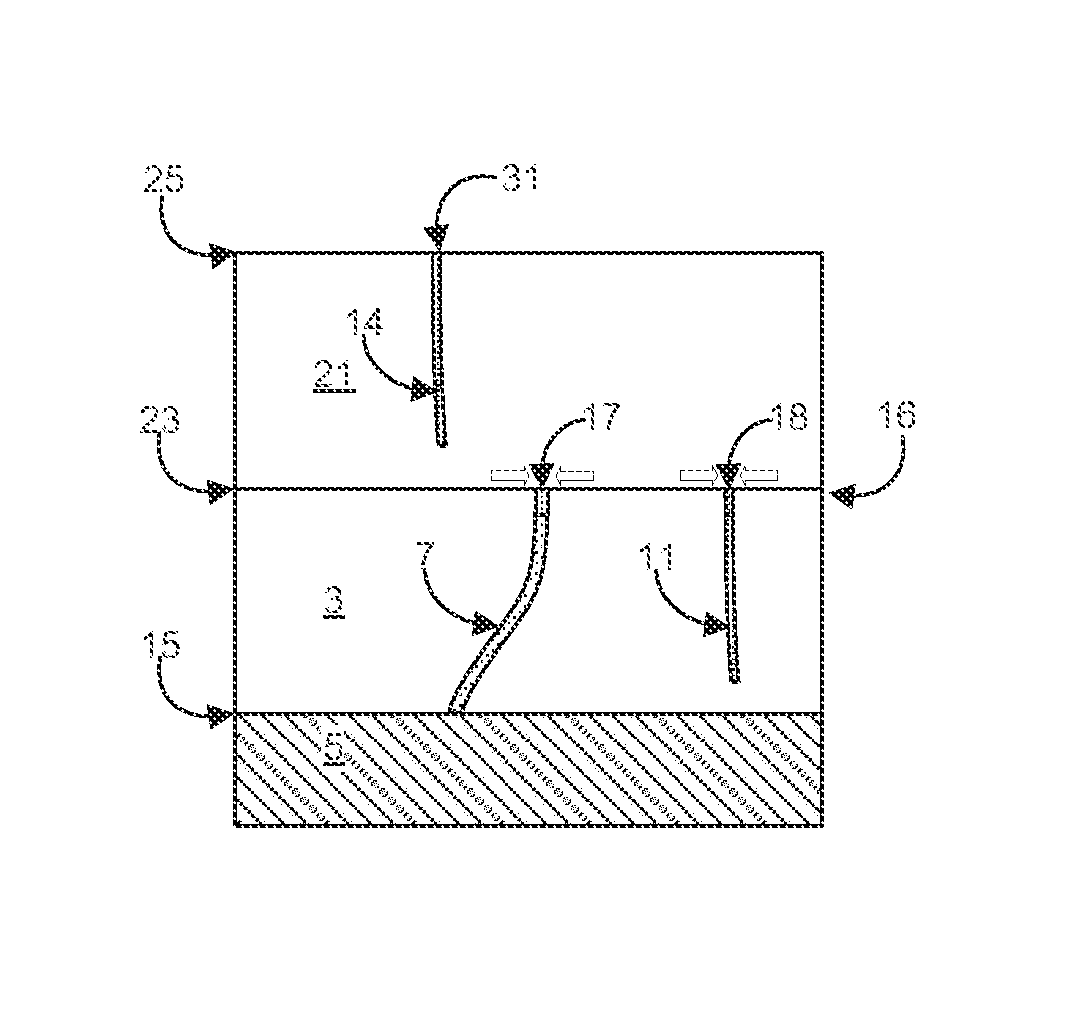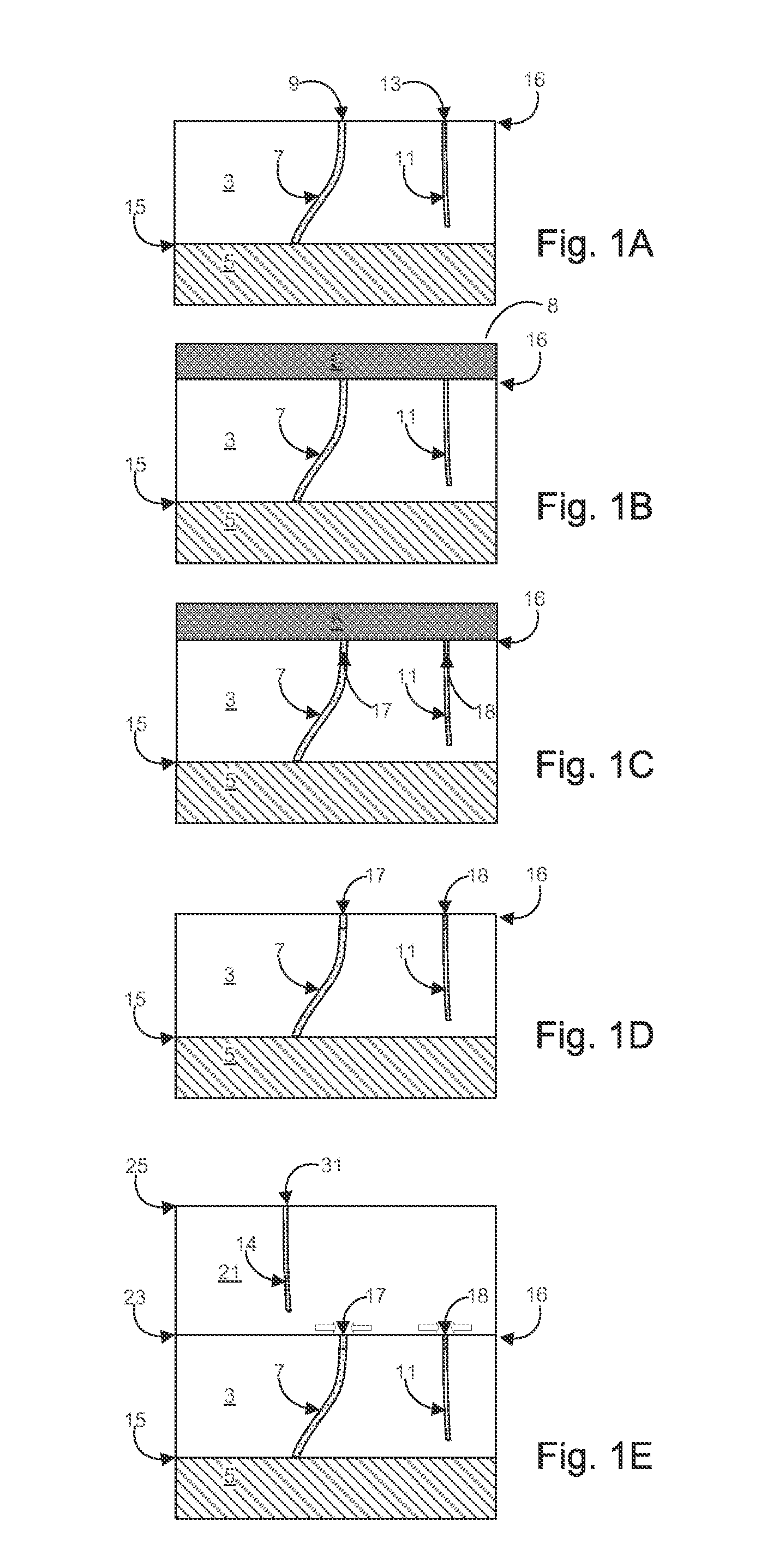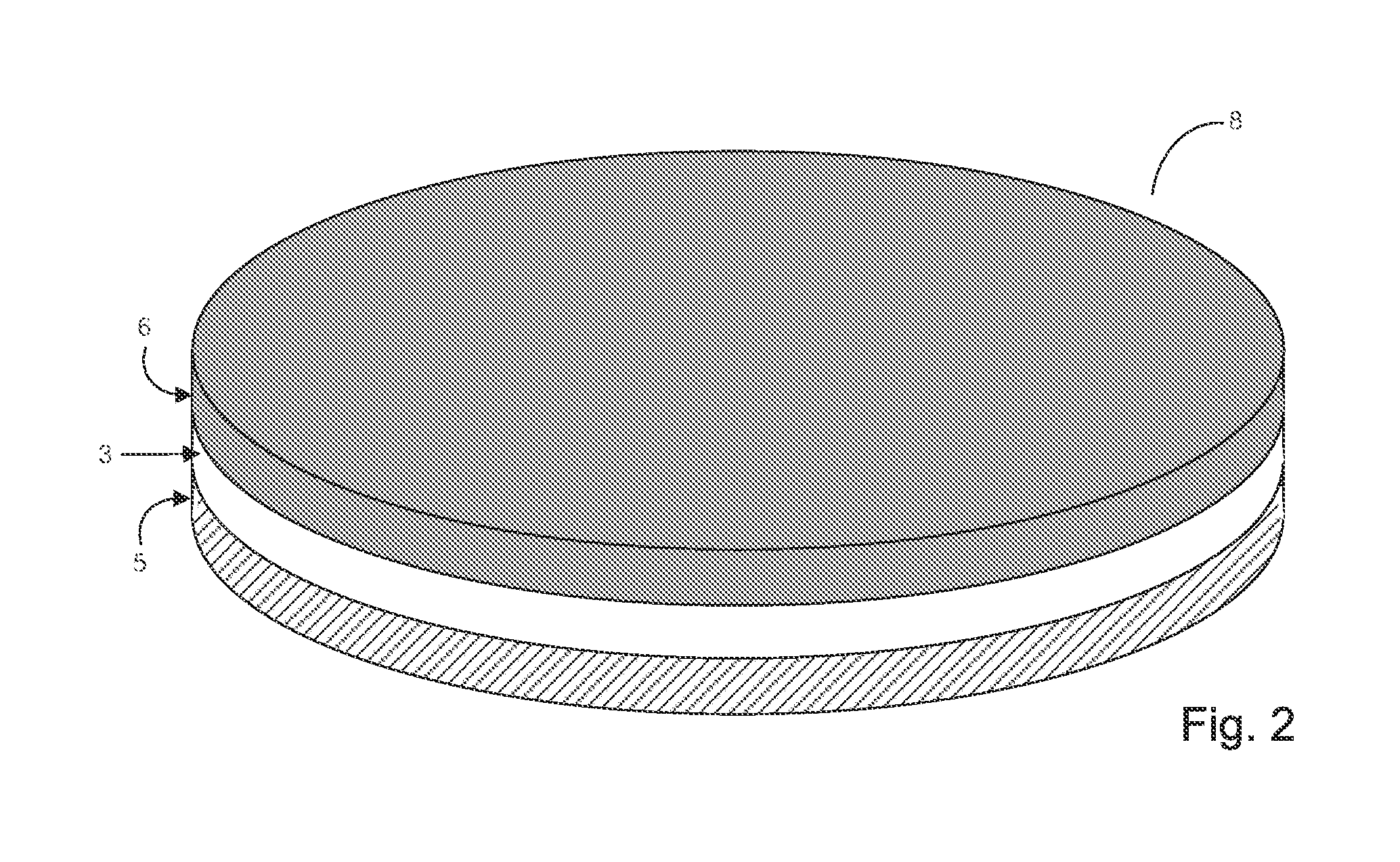Methods for improving the quality of group III-nitride materials and structures produced by the methods
a technology of group iii-nitride and methods, which is applied in the direction of basic electric elements, electrical apparatus, and semiconductor devices, can solve the problems of material density, dislocation, and difficulty in growing bulk single crystals, and achieve the effect of preventing decomposition and reducing surface defect density
- Summary
- Abstract
- Description
- Claims
- Application Information
AI Technical Summary
Benefits of technology
Problems solved by technology
Method used
Image
Examples
example 1
[0056]A (0001) sapphire substrate is utilized for the growth of gallium nitride layer 3. The substrate can be prepared for gallium nitride growth by preprocessing steps such as a cleaning cycle to remove unwanted contaminants (e.g. a high temperature bake in hydrogen containing ambient), a nitridization of the upper surface of the substrate, and further surface pretreatments dependent on the growth material and substrate.
[0057]Next a nucleation layer is deposited on the substrate and gallium nitride layer 3 is grown in a metalorganic chemical vapor deposition (MOCVD) reactor utilizing trimethlygallium (TMG) and ammonia (NH3) as precursor gases. First, the nucleation layer is deposited then thermally treated. Nucleation layer deposition is performed for a period of about 20 min by flowing TMG and NH3 while maintaining the reactor temperature at approximately 500° C. and the pressure at about 300 mb. Next, the nucleation layer is thermally treated by maintaining the reactor pressure a...
example 2
[0063]Many aspects of this example are similar to those of Example 1, and reference is made to that example for their description. Only aspects distinct from the previous example will be described.
[0064]The initial Group III-nitride layer (structure of FIG. 1A) with surface defects is grown as in Example 1. This structure is not removed from the deposition reactor utilized for deposition.
[0065]The temperature of the deposition reactor is then cooled from gallium nitride growth temperature (e.g. about 1100° C.) down to a temperature of approximately 600° C. over a time period of approximately 15 minutes. A protective layer comprising silicon nitride is now grown by introducing silane gas (or alternatively diethylsilane) and ammonia gas (or alternatively hydrazine, or a nitrogen gas vapor generated from a nitrogen based organometallic precursor) the deposition chamber for a growth time period of about 30 minutes and at a growth temperature of approximately 600° C. The thickness of the...
PUM
| Property | Measurement | Unit |
|---|---|---|
| temperature | aaaaa | aaaaa |
| temperature | aaaaa | aaaaa |
| temperature | aaaaa | aaaaa |
Abstract
Description
Claims
Application Information
 Login to View More
Login to View More - R&D
- Intellectual Property
- Life Sciences
- Materials
- Tech Scout
- Unparalleled Data Quality
- Higher Quality Content
- 60% Fewer Hallucinations
Browse by: Latest US Patents, China's latest patents, Technical Efficacy Thesaurus, Application Domain, Technology Topic, Popular Technical Reports.
© 2025 PatSnap. All rights reserved.Legal|Privacy policy|Modern Slavery Act Transparency Statement|Sitemap|About US| Contact US: help@patsnap.com



